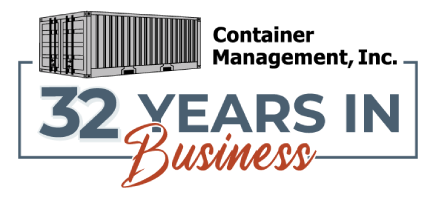4 Simple Ways To Keep Moisture Out of Shipping Containers
Written by Susan Nalevac | January 18, 2022
Condensation is a common issue for shipping container owners. As with any storage solution, protecting the contents of your shipping container is a top priority, and unfortunately, moisture levels can damage many kinds of goods.
Here are four simple ways to keep moisture out of shipping containers and protect your annexed office, workshop, or materials:

Consider What You Store
Some things you keep in your shipping container can contribute to heightened moisture levels. Pallets are a common contributor because fresh wood or wood that’s recently been somewhere cold or damp releases moisture over time.
Likewise, any damp goods subject to temperature changes while in the container add to the condensation. Storing these items inside a container isn’t an issue. However, it’s important to remain mindful of any high moisture-content items. You want to take measures so that condensation doesn’t become an issue.
Use a Dehumidifier
A dehumidifier is a quick way to lower the moisture content in the air and protect your stored goods. Many dehumidifiers require an electrical outlet for use, but cordless options are available.
Remember to frequently empty captured water content from the dehumidifier. Emptying the dehumidifier prevents water from re-entering the air and keeps your dehumidifier operating. Desiccant bags or packs also work to absorb moisture. Both solutions are temporary and require frequent upkeep or replacement.
Improve Your Container's Ventilation
Temperature changes are a major contributor to the appearance of condensation in your container. Adequate ventilation helps the internal temperature of your container align with external temperatures.
Ventilation, when added correctly, can still maintain your container’s watertight status and protect your stored materials. Fans and vents both help in this regard. But it’s important to consider if your goods can tolerate outside temperatures before making this modification.
Add Insulation to Your Container
Another simple way to keep moisture out of shipping containers is to regulate internal temperatures with insulation. You can use many kinds of insulation inside a shipping container, including spray foam.
You must choose your insulation with the temperature of your region in mind. You also want to avoid any insulation that creates concealed condensation (moisture between the insulation and the container wall).
Ultimately, it’s vital to work with an experienced container modification team that considers each factor to deliver you the best results possible.
Conclusion
Our team of experts at Container Management, Inc. is ready to help you pick and modify the correct container for your needs. Along with offering several grades of shipping containers for sale at our Houston location, we also do modification services.
These include exhaust fans and ventilation, rough-in plumbing, and insulation installation. Call us today to speak with one of our team members or fill out our online form for an instant quote.




